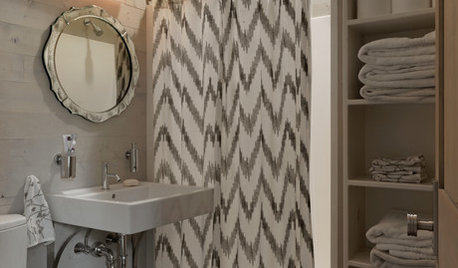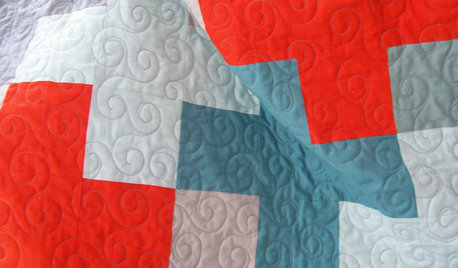To Gardener Boy & All...A Cure for Curing...
tango88
19 years ago
Related Stories

LAUNDRY ROOMSThe Cure for Houzz Envy: Laundry Room Touches Anyone Can Do
Make fluffing and folding more enjoyable by borrowing these ideas from beautifully designed laundry rooms
Full Story
KITCHEN DESIGNThe Cure for Houzz Envy: Kitchen Touches Anyone Can Do
Take your kitchen up a notch even if it will never reach top-of-the-line, with these cheap and easy decorating ideas
Full Story
MUDROOMSThe Cure for Houzz Envy: Mudroom Touches Anyone Can Do
Make a utilitarian mudroom snazzier and better organized with these cheap and easy ideas
Full Story
BEDROOMSThe Cure for Houzz Envy: Master Bedroom Touches Anyone Can Do
Make your bedroom a serene dream with easy moves that won’t give your bank account nightmares
Full Story
HOME OFFICESThe Cure for Houzz Envy: Home Office Touches Anyone Can Do
Borrow these modest design moves to make your workspace more inviting, organized and personal
Full Story
BATHROOM DESIGNThe Cure for Houzz Envy: Bathroom Touches Anyone Can Do
Take your bath from blah to ‘ahhhh’ with just a few easy and inexpensive moves
Full Story
DECORATING GUIDESThe Cure for Houzz Envy: Guest Room Touches Anyone Can Do
Make overnight guests feel comfy and cozy with small, inexpensive niceties
Full Story
CURB APPEALThe Cure for Houzz Envy: Great Front Facade Touches to Borrow
Pull up to a better view and make visitors feel welcome by perking up your home’s face
Full Story
DECORATING GUIDESThe Cure for Houzz Envy: Family Room Touches Anyone Can Do
Easy and cheap fixes that will help your space look more polished and be more comfortable
Full Story
PRODUCT PICKSGuest Picks: Cure Style Doldrums With Swiss Cross Accessories
If your home decor could use some reviving, apply these blankets, pillows and tiles and watch it perk right up
Full StorySponsored






myback_garden
Jilly_W
Related Professionals
Grand Haven Landscape Architects & Landscape Designers · Azalea Park Landscape Contractors · Beverly Hills Landscape Contractors · Burien Landscape Contractors · Crystal Landscape Contractors · Estelle Landscape Contractors · Firestone Landscape Contractors · Framingham Landscape Contractors · Fuquay-Varina Landscape Contractors · Hicksville Landscape Contractors · Lemont Landscape Contractors · Royal Oak Landscape Contractors · San Rafael Landscape Contractors · Casselberry Landscape Contractors · Selma Landscape Contractorsmyback_garden
peakpoet
Jilly_W
myback_garden
billie_ann
HowieDoin
HowieDoin
Gardener_boy
HowieDoin
tango88Original Author
Gardener_boy
jazzbone
ChristineW
tufaenough
mabeldingeldine_gw
gottatufa
jazzbone
tufaenough
jazzbone
daisy_ny6
tufaenough
jazzbone
tufaenough
gottatufa
tufaenough
gottatufa
tufaenough
gottatufa
tufaenough
herself